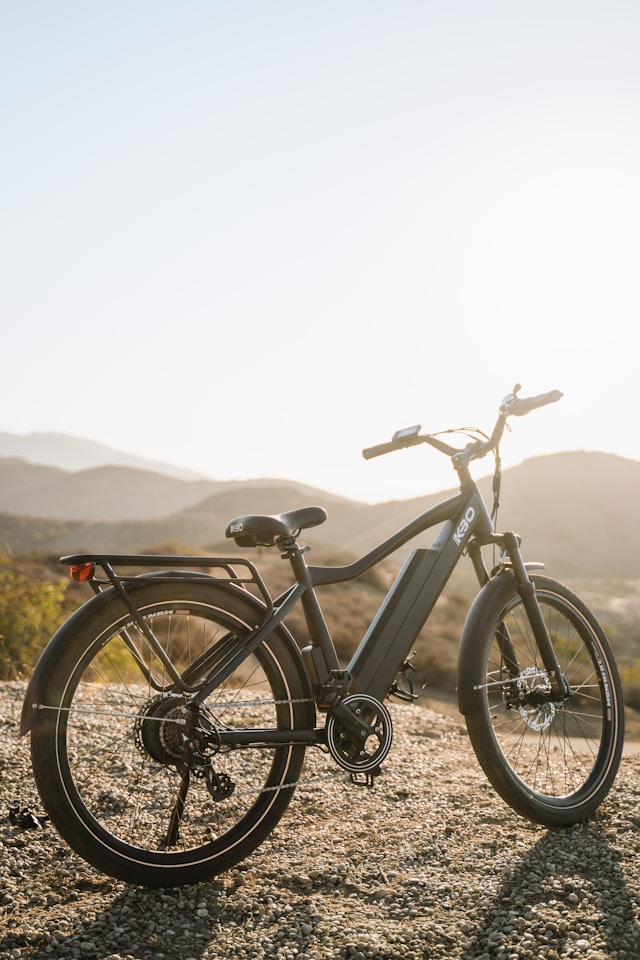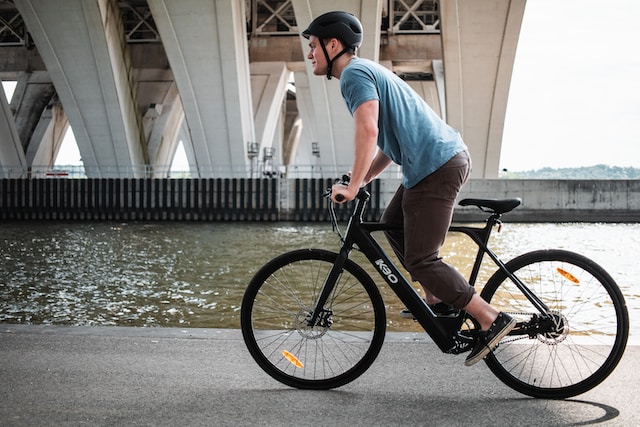7 Mistakes Newbies Make When Buying Their First Electric Bike
In recent years, the electric bike market has experienced an unprecedented surge in popularity, revolutionizing the way people commute, exercise, and explore their surroundings. With advancements in technology and a growing emphasis on sustainability, electric bikes have swiftly become a favored mode of transportation for many individuals seeking a convenient, eco-friendly alternative to traditional bikes or automobiles.
Amidst this growing trend, it’s crucial for newcomers to the electric bike scene to navigate their purchasing journey with caution and knowledge. While the prospect of owning an electric bike can be exhilarating, it’s all too easy to fall into common pitfalls that can lead to disappointment or dissatisfaction down the road.
This blog post aims to shed light on the importance of avoiding these common mistakes when purchasing your first electric bike. By arming yourself with essential information and guidance, you can make informed decisions that align with your needs, preferences, and budget. Whether you’re a seasoned cyclist exploring new avenues or a beginner venturing into the world of electric bikes for the first time, this guide is designed to empower you with the knowledge necessary to embark on your electric bike journey with confidence.
Key Takeaways
- Conduct Thorough Research: Take the time to thoroughly research different electric bike models, features, and brands before making a purchase. Consider factors such as motor power, battery capacity, frame design, and riding styles to find the electric bike that best suits your needs and preferences.
- Set a Realistic Budget: Determine a realistic budget for your electric bike purchase and stick to it. While it’s tempting to splurge on high-end models with all the bells and whistles, setting a budget ensures that you make a financially responsible decision and prioritize features that are essential to you.
- Test Ride Multiple Electric Bikes: Don’t underestimate the importance of test rides in finding the right electric bike for you. Test ride multiple models to get a feel for their performance, comfort, and handling characteristics. Pay attention to factors such as acceleration, braking, and overall ride quality to make an informed decision.
- Pay Attention to Battery Range and Type: Battery range and type are crucial considerations when choosing an electric bike. Ensure that the bike’s battery offers sufficient range to meet your riding needs and consider factors such as battery chemistry and capacity to maximize performance and longevity.
- Understand Maintenance Requirements: Familiarize yourself with the maintenance requirements of electric bikes and factor them into your decision-making process. Regular maintenance, including cleaning, lubrication, and battery care, is essential for ensuring the longevity and performance of your electric bike.
- Prioritize Functionality and Performance: While aesthetics are important, prioritize functionality and performance when choosing your electric bike. Focus on features such as motor power, battery capacity, and riding comfort to ensure that your bike meets your practical needs and delivers a satisfying riding experience.
- Ensure Reliable After-Sales Support and Warranty Coverage: Finally, ensure that the manufacturer or retailer offers reliable after-sales support and warranty coverage. Research the reputation of the company for customer service and warranty claims to ensure that you receive prompt assistance in case of any issues or concerns with your electric bike.
1. Lack of Research
Purchasing your first electric bike without conducting thorough research is akin to setting sail without a compass. Research serves as your guiding light, illuminating the vast array of options, features, and considerations within the electric bike market. Without it, you risk steering blindly into a purchase that may not meet your needs or expectations.
Understanding the intricacies of electric bike features and options is paramount to making an informed decision. From motor power and battery capacity to frame design and riding modes, each aspect contributes to the overall performance and suitability of the electric bike for your intended use. Failure to grasp these nuances may result in selecting a bike ill-suited to your lifestyle, leading to dissatisfaction and regret down the line.
Imagine investing in an electric bike without realizing the importance of torque sensors for smooth pedal assistance or overlooking the significance of removable batteries for convenient charging. Without research, you may inadvertently overlook crucial features that could greatly enhance your riding experience.
By diligently researching electric bike options, you empower yourself to make decisions that align with your specific needs and preferences. Whether it’s scouring online reviews, consulting with experienced riders, or visiting local bike shops for hands-on experience, the effort invested in research pays dividends in the form of a satisfying and rewarding electric bike purchase. So, before you take the plunge, arm yourself with knowledge and embark on your electric bike journey with confidence.
2. Ignoring Budget Considerations
When venturing into electric bike ownership, one of the gravest mistakes a newbie can make is disregarding budget considerations. While the allure of cutting-edge features and top-of-the-line models may be enticing, failing to establish a realistic budget can lead to financial strain and buyer’s remorse.
Why Setting a Budget is Crucial
Setting a budget serves as a fundamental cornerstone of the electric bike purchasing process for several compelling reasons. Firstly, it provides a clear framework within which to narrow down options and prioritize features based on affordability. Without a budget in place, you run the risk of succumbing to impulse purchases or overspending on features that may exceed your actual needs.
Moreover, establishing a budget fosters financial responsibility and ensures that your electric bike investment remains within manageable limits. By delineating the maximum amount you’re willing to spend, you mitigate the temptation to stretch your finances beyond comfortable thresholds, thereby safeguarding against potential financial strain or debt.
Tips on Determining a Suitable Budget
- Assess Your Financial Situation: Begin by evaluating your current financial status and determining how much you can comfortably allocate towards an electric bike purchase without compromising other essential expenses or savings goals.
- Consider Long-Term Costs: Factor in not only the upfront cost of the electric bike but also any potential long-term expenses such as maintenance, repairs, and accessories. Opting for a higher-quality bike with superior components may entail lower maintenance costs in the long run.
- Research Price Ranges: Explore the wide spectrum of electric bike models available on the market and familiarize yourself with their respective price ranges. This will provide insight into what features are attainable within your budgetary constraints.
- Prioritize Features: Identify the key features and functionalities that are non-negotiable for your intended use of the electric bike. Allocate a larger portion of your budget towards these essential features while being willing to compromise on less critical aspects.
- Be Realistic: While it’s natural to aspire towards the latest and most advanced electric bike models, it’s essential to remain grounded in your financial reality. Set realistic expectations and be prepared to make trade-offs to stay within your budgetary limits.
By adhering to these tips and approaching the electric bike purchasing process with a clear budgetary framework, you can make informed decisions that align with your financial situation and riding needs. Remember, the goal is not to find the most expensive electric bike but rather the one that offers the best value and satisfaction within your budgetary constraints.
RELATED CONTENT – Affordable Electric Bikes Under $500
RELATED CONTENT – Affordable Electric Mountain Bikes Under $1000
3. Overlooking Test Rides
One of the critical mistakes that newcomers often make when purchasing their first electric bike is overlooking the importance of test rides. While researching and reading reviews can provide valuable insights, nothing compares to the firsthand experience of riding different electric bikes to determine which one best suits your needs and preferences.
Emphasizing the Significance of Test Rides
Test rides serve as an invaluable opportunity to assess how a particular electric bike performs in real-world conditions and how it feels under your control. They allow you to gauge factors such as comfort, handling, and overall ride quality, which are difficult to ascertain solely through specifications or descriptions.
Test rides provide a chance to experience the nuances of different electric bike models, from the responsiveness of the motor to the smoothness of the pedal assist system. By test riding multiple bikes, you can compare and contrast their performance characteristics, helping you make a more informed decision based on your personal riding preferences.
Advice on What to Look for During Test Rides
- Comfort: Pay close attention to the comfort level of the electric bike, particularly regarding the fit of the frame, saddle, and handlebars. Ensure that the bike’s geometry and ergonomic design are conducive to a comfortable riding posture, especially for longer journeys.
- Handling and Stability: Assess how the electric bike handles various terrain and riding conditions, such as hills, corners, and rough surfaces. Look for stability and responsiveness in steering, as well as confidence-inspiring handling characteristics that instill a sense of control and safety.
- Motor Performance: Evaluate the power and responsiveness of the electric bike’s motor, particularly in relation to acceleration and hill-climbing capabilities. Note how seamlessly the motor engages and disengages during acceleration and deceleration, and assess whether the level of assistance meets your riding needs.
- Battery Range: Take note of the electric bike’s battery range and how it performs under different riding conditions. Test rides provide an opportunity to gauge the real-world range of the bike and determine whether it aligns with your typical riding habits and distances.
- Braking System: Assess the effectiveness and responsiveness of the electric bike’s braking system, including both the mechanical brakes and any regenerative braking features. Ensure that the brakes provide sufficient stopping power and modulate smoothly to maintain control during deceleration.
By actively engaging in test rides and carefully evaluating the aforementioned factors, you can make a more informed decision when selecting your first electric bike. Remember that each rider has unique preferences and priorities, so trust your instincts and choose the electric bike that feels most comfortable and enjoyable to ride.
RELATED CONTENT – Ebikes for Beginners 101: A Complete Guide
RELATED CONTENT- A Guide to Choosing the Best Electric Bike Battery
4. Disregarding Battery Range and Type
Another common mistake that newbies often make when buying their first electric bike is disregarding the crucial factors of battery range and type. The battery is the powerhouse of an electric bike, providing the energy needed to propel you forward with electric assistance. Understanding the nuances of battery range and types is essential for ensuring that your electric bike meets your riding needs and expectations.
Importance of Understanding Battery Range and Types
Battery range refers to the distance an electric bike can travel on a single charge. It’s a critical consideration for riders, as it directly impacts the bike’s usability and suitability for various riding scenarios. Whether you’re commuting to work, embarking on leisurely rides, or tackling longer distances, having sufficient battery range ensures that you can reach your destination without running out of power.
The type of battery used in an electric bike significantly influences its performance, longevity, and overall riding experience. Different battery chemistries, such as lithium-ion or lithium polymer, offer varying levels of energy density, weight, and durability. Understanding these distinctions allows you to make an informed decision based on factors such as range, weight, and lifespan.
Insights into How Different Battery Types and Capacities Affect the Riding Experience
- Lithium-Ion vs. Lithium Polymer: Lithium-ion batteries are the most common type found in electric bikes due to their high energy density, lightweight construction, and relatively long lifespan. They offer a good balance of performance and durability for most riders. On the other hand, lithium polymer batteries may provide slightly higher energy density but are often heavier and less common in electric bikes.
- Capacity and Range: The capacity of an electric bike’s battery, typically measured in watt-hours (Wh), directly correlates with its range. Higher capacity batteries can provide longer distances per charge, making them suitable for riders who require extended range capabilities. However, it’s essential to balance capacity with other factors such as weight and cost to ensure optimal performance and value.
- Weight and Handling: The weight of the battery can affect the overall handling and maneuverability of the electric bike. Heavier batteries may contribute to a less agile ride, particularly when navigating tight corners or steep inclines. Consider the trade-offs between battery capacity and weight to find a balance that suits your riding style and preferences.
- Charging Time and Convenience: Different battery types and capacities may require varying amounts of time to recharge fully. Lithium-ion batteries typically offer faster charging times compared to other chemistries, allowing for quicker turnaround between rides. Additionally, consider factors such as charging infrastructure and portability when evaluating the convenience of charging your electric bike’s battery.
By understanding the nuances of battery range and types, you can select an electric bike that aligns with your riding needs, preferences, and lifestyle. Whether you prioritize long-range capabilities for extended adventures or lightweight portability for urban commuting, choosing the right battery can enhance your overall riding experience and enjoyment.
RELATED CONTENT – Choosing Your First Electric Bike: Factors to Consider for New Riders
RELATED CONTENT – Electric Bike Buying Guide
5. Focusing Solely on Design
It’s easy to fall into the trap of focusing solely on the aesthetics when purchasing your first electric bike. The sleek lines, vibrant colors, and modern design elements can captivate your attention, tempting you to prioritize style over substance. However, while a visually appealing electric bike may turn heads and garner compliments, it’s essential to remember that functionality should always take precedence over aesthetics.
Importance of Functionality Over Aesthetics
When it comes to electric bikes, looks can be deceiving. While a stylish design may initially catch your eye, it’s the bike’s functionality that ultimately determines its usability and performance. A bike that looks great but lacks essential features or fails to deliver on performance may leave you feeling disappointed and dissatisfied in the long run.
Moreover, electric bikes are not just fashion accessories; they’re practical tools designed to enhance your riding experience and facilitate your daily transportation needs. Prioritizing functionality over aesthetics ensures that you select an electric bike that meets your practical requirements and delivers a satisfying riding experience.
Encouragement to Prioritize Features and Performance
Instead of getting swept away by superficial design elements, I encourage you to prioritize features and performance when choosing your electric bike. Consider factors such as motor power, battery range, riding modes, and comfort features, all of which directly impact the bike’s functionality and suitability for your intended use.
- Motor Power and Performance: Focus on the motor’s power output and performance capabilities, as these factors determine the bike’s speed, acceleration, and ability to tackle hills and challenging terrain. Opt for a motor that provides sufficient power to meet your riding needs without compromising efficiency or battery life.
- Battery Range and Capacity: Look beyond the exterior design and evaluate the battery’s range and capacity to ensure that it aligns with your typical riding distances and usage patterns. Choose a battery with adequate capacity to support your daily commute or recreational rides without the need for frequent recharging.
- Comfort and Ergonomics: Pay attention to comfort features such as saddle design, handlebar position, and suspension systems, which play a crucial role in ensuring a comfortable and enjoyable riding experience. Prioritize ergonomics and adjustability to accommodate your unique body proportions and riding preferences.
- Durability and Build Quality: Consider the build quality and materials used in the construction of the electric bike to assess its durability and longevity. Look for sturdy frame construction, reliable components, and reputable brands known for their quality and reliability.
By focusing on features and performance rather than being swayed by superficial design elements, you can make a more informed decision when selecting your first electric bike. Remember that while aesthetics may fade over time, functionality and performance endure, ensuring that your electric bike continues to serve you well for years to come.
RELATED CONTENT – Can an Electric Bike be Repaired at a Local Bike Shop?
6. Neglecting Maintenance Requirements
One of the most common oversights made by new electric bike owners is neglecting the maintenance needs of their new ride. While electric bikes offer convenience and efficiency, they still require regular care and attention to ensure optimal performance and longevity. Ignoring maintenance requirements can lead to premature wear and tear, decreased efficiency, and potential safety hazards.
Maintenance Needs of Electric Bikes
Electric bikes consist of intricate mechanical and electrical components that require periodic maintenance to function smoothly. From the motor and battery to the drivetrain and brakes, each part plays a crucial role in the bike’s performance and reliability. Neglecting maintenance can result in issues such as battery degradation, motor malfunctions, and component failure, compromising both safety and ride quality.
Tips on Caring for and Maintaining an Electric Bike
- Regular Cleaning: Keep your electric bike clean and free of dirt, grime, and debris to prevent corrosion and damage to components. Use a mild detergent and water to clean the frame, wheels, and drivetrain regularly, and avoid high-pressure sprays that may force water into sensitive electrical parts.
- Battery Care: Follow manufacturer guidelines for charging and storing your electric bike’s battery to prolong its lifespan and maintain optimal performance. Avoid exposing the battery to extreme temperatures or allowing it to fully discharge, and consider storing it in a cool, dry place when not in use for extended periods.
- Tire Maintenance: Check your electric bike’s tire pressure regularly and inflate them to the recommended PSI to ensure optimal grip, efficiency, and ride comfort. Inspect the tires for signs of wear, damage, or punctures, and replace them as needed to maintain traction and safety.
- Drivetrain Lubrication: Keep the drivetrain components, including the chain, cassette, and derailleur, well-lubricated to minimize friction, wear, and noise. Clean the drivetrain regularly with a degreaser and apply a quality bicycle chain lubricant to ensure smooth shifting and efficient power transfer.
- Brake Adjustment and Inspection: Regularly inspect and adjust the brakes on your electric bike to ensure optimal stopping power and safety. Check brake pads for wear and replace them if necessary, and test the brakes periodically to ensure they engage smoothly and effectively.
- Suspension Maintenance: If your electric bike is equipped with suspension forks or rear shocks, follow manufacturer guidelines for maintenance and adjustment to maintain proper performance and comfort. Keep suspension components clean and lubricated, and have them serviced by a professional if needed.
- Electrical Component Inspection: Periodically inspect electrical connections, cables, and connectors for signs of damage, wear, or corrosion. Ensure that all electrical components are securely attached and functioning correctly, and address any issues promptly to prevent further damage or safety hazards.
By following these tips and incorporating regular maintenance into your electric bike care routine, you can prolong its lifespan, optimize performance, and enjoy a safe and satisfying riding experience for years to come. Remember that proper maintenance is key to maximizing the enjoyment and longevity of your electric bike investment.
7. Not Considering After-Sales Support and Warranty
Overlooking the importance of after-sales support and warranty coverage is a common oversight made by new electric bike buyers. While the excitement of purchasing a new bike may overshadow concerns about future maintenance or repairs, neglecting to consider these factors can have significant consequences down the road. Reliable after-sales support and warranty coverage are crucial elements that ensure peace of mind and protection against unexpected issues or defects.
Importance of Reliable After-Sales Support and Warranty Coverage
After-sales support and warranty coverage serve as safeguards against unforeseen challenges that may arise during the ownership of your electric bike. Whether it’s troubleshooting technical issues, obtaining replacement parts, or addressing warranty claims, having access to responsive and reliable customer support can make all the difference in resolving issues quickly and efficiently.
A comprehensive warranty provides assurance that the manufacturer stands behind their product and is committed to addressing any defects or malfunctions that may occur within the specified coverage period. This protection not only protects your investment but also instills confidence in the quality and reliability of the electric bike you’ve chosen.
Advice for Researching After-Sales Support and Warranty
- Manufacturer Reputation: Research the reputation of the electric bike manufacturer or retailer for their customer service and after-sales support. Look for reviews and testimonials from other customers regarding their experiences with warranty claims, repairs, and overall satisfaction with the company’s support services.
- Warranty Coverage: Review the warranty terms and conditions provided by the manufacturer to understand the extent of coverage and any limitations or exclusions that may apply. Pay attention to the duration of the warranty, what components are covered, and any requirements or procedures for making warranty claims.
- Customer Service Accessibility: Evaluate the accessibility and responsiveness of the manufacturer’s customer service channels, such as phone support, email inquiries, or online chat. Consider reaching out to the manufacturer with any pre-purchase questions or concerns to gauge their level of responsiveness and professionalism.
- Authorized Service Centers: Inquire about the availability of authorized service centers or certified technicians in your area who can perform repairs and maintenance on your electric bike. Having access to trained professionals familiar with the specific model can streamline the repair process and ensure that your bike is serviced to the highest standards.
- User Feedback: Seek feedback from other electric bike owners or online communities to learn about their experiences with after-sales support and warranty claims. Real-world testimonials can provide valuable insights into the manufacturer’s reputation and the level of support you can expect as a customer.
By conducting thorough research and considering after-sales support and warranty coverage as essential factors in your electric bike purchase decision, you can ensure that you’re investing in a product backed by reliable protection and support services. Prioritizing these considerations will not only provide peace of mind but also contribute to a positive ownership experience with your new electric bike.
FAQs
The lifespan of an electric bike battery can vary depending on several factors, including the quality of the battery, usage patterns, and maintenance practices. On average, most lithium-ion batteries used in electric bikes are designed to last between 2 to 5 years or approximately 500 to 1000 charge cycles. However, with proper care and maintenance, some batteries can exceed these estimates, while others may degrade more quickly.
Yes, electric bikes can be excellent options for long-distance commuting, offering a convenient and eco-friendly alternative to traditional modes of transportation. Electric bikes equipped with high-capacity batteries and efficient motors can provide sufficient range to cover long distances on a single charge, making them ideal for daily commutes or recreational rides. Additionally, electric bikes allow riders to tackle hills and headwinds with ease, reducing fatigue and increasing overall efficiency during long rides.
While electric bikes require some additional maintenance compared to traditional bicycles due to their electrical components, the overall maintenance needs are relatively similar. Routine tasks such as cleaning, lubricating the chain, checking tire pressure, and adjusting brakes are common to both electric and regular bikes. However, electric bikes may require occasional maintenance specific to their electrical components, such as inspecting connections, monitoring battery health, and updating firmware or software. Overall, the maintenance requirements for electric bikes are manageable and can be easily incorporated into a regular maintenance routine to ensure optimal performance and longevity.
Conclusion
In conclusion, navigating the process of purchasing your first electric bike can be an exciting yet daunting endeavor. However, armed with the knowledge and insights provided in this guide, you can approach the decision-making process with confidence and clarity. By avoiding common mistakes such as neglecting research, disregarding maintenance needs, and focusing solely on aesthetics, you can make informed decisions that align with your riding preferences and lifestyle.
Remember to prioritize functionality, performance, and after-sales support when selecting your electric bike, ensuring that you invest in a reliable and enjoyable ride. Whether you’re commuting to work, exploring scenic trails, or simply enjoying the freedom of two wheels, your electric bike should enhance your riding experience and enrich your life.
Join the Conversation
We’d love to hear about your experiences with electric bikes or any additional tips you may have for fellow riders. Feel free to share your thoughts, questions, or insights in the comments section below. Your feedback not only helps us improve our content but also fosters a vibrant community of electric bike enthusiasts who can learn from and support one another. Don’t hesitate to join the conversation and share this guide with others who may benefit from its valuable information. Happy riding!
External Sources
For those eager to delve deeper into the world of electric bikes and expand their knowledge beyond the scope of this guide, we’ve compiled a list of reputable sources offering valuable insights and information on electric bike purchasing tips, battery maintenance, and more:
- Electric Bike Review: This comprehensive website offers in-depth reviews, comparisons, and buying guides for a wide range of electric bikes. Whether you’re a novice or seasoned rider, Electric Bike Review provides valuable insights to help you make informed purchasing decisions.
- Bicycle Maintenance Guide: Understanding how to properly care for your electric bike is essential for maintaining its performance and longevity. This detailed maintenance guide covers everything from cleaning and lubrication to troubleshooting common issues, ensuring that your electric bike remains in top condition.
- Battery Maintenance Tips: The battery is the heart of your electric bike, and proper maintenance is key to maximizing its lifespan and performance. This informative article provides practical tips and advice for maintaining your electric bike battery, including charging best practices, storage recommendations, and troubleshooting tips.
- Electric Bike Forums: Engaging with online communities and forums dedicated to electric bikes can be an invaluable resource for sharing experiences, asking questions, and connecting with fellow riders. Websites such as Electric Bike Forums provide a platform for discussing electric bike-related topics, sharing tips and advice, and staying updated on the latest developments in the industry.
Kristina Grant is not just an enthusiast but a true authority on electric bikes. Nestled in the coastal beauty of Virginia, Kristina has found the perfect backdrop for her passion for electric biking. As a dedicated wife and homeschooling mom, her life revolves around family, faith, and the thrill of adventure.
Originally hailing from Ohio, Kristina's journey with electric bikes began as a curiosity and quickly evolved into a deep expertise. Her blog is a testament to her love for electric biking, combining her fascination for eco-friendly transportation with her coastal lifestyle.
When she's not cruising the beach on her electric bike, you'll find Kristina indulging in her other loves: long walks along the shore, getting lost in a good book, and cherishing moments with her loved ones. With a heart as big as her love for animals, especially cats, Kristina brings a unique perspective to the electric bike world, grounded in her strong faith in God and her dedication to a sustainable lifestyle.
Through her blog, Kristina shares her extensive knowledge of electric bikes, offering valuable insights, tips, and recommendations to fellow enthusiasts. Whether you're a seasoned rider or a newcomer to the electric bike scene, Kristina's blog is your go-to source for all things electric biking, fueled by her passion, expertise, and the scenic beauty of coastal Virginia.







